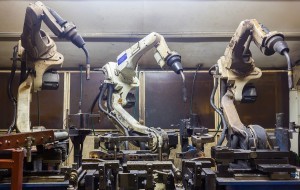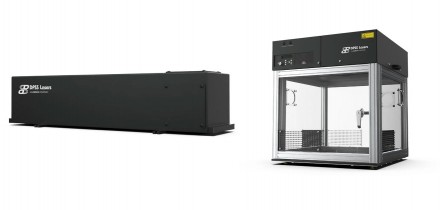
At this year’s SEMICON West, which took place both in person in San Francisco in July and as a hybrid event, the focus was on the future of the semiconductor and microelectronics industry. The CHIPS and Science Act was much discussed at the event, and fortunately was signed into law just a few weeks later. The Act is intended to build on the progress of American manufacturing, making historic investments to strengthen American manufacturing, supply chains, and national security.
A recent Marcum survey produced by the Manufacturing & Distribution group finds that the majority of manufacturers were already feeling optimistic even before the CHIPS act passed. Nearly all respondents to this year’s survey saw an increase in revenue year over year, and well over half expect to keep growing through 2022. The biggest challenge noted by respondents was filling jobs, citing the Great Resignation as leaving holes in the workforce. But US manufacturers have bemoaned the lack of workers for years, if not decades. Survey respondents said that despite the struggle to find workers, the majority plan to increase headcount in the next year. To attract new workers, 86% of respondents raised wages, 66% improved benefits, and more than half increased bonuses last year.
"It is not surprising that more than 75% of respondents view their workforce as a critical to the success of their businesses, and that the ongoing tight labor market —– especially for skilled workers —– remains a major concern. More than 60% of respondents told us they plan to increase their workforce by at least 5% in the next year, and more than 80% expect to replace 15% or more of their workforce in the next four years. While most manufacturers are offering higher wages and looking to improve benefits, those approaches can be a zero-sum game if everyone is applying them,” Shoop said.
Incentivizing manufacturing
The Inflation Reduction Act of 2022 was also recently signed into law in the US, bolstering clean energy manufacturing. The incentives include loans available for auto manufacturers to retool their factories to build the next generation of electric cars and trucks. The increase in made in the USA production is intended to ease dependence on foreign countries, potentially alleviating supply chain and shipping issues. According to the survey, supply chain bottlenecks continue to plague manufacturers with 40% of respondents say they are seeking to diversify their supply chains, with 63% of respondents reporting shipping delays and a third unable to meet demand last year due to supply chain issues. Ongoing supply chain disruption was a top concern for 45% of respondents, up from 23% last year.
"It is encouraging to see that optimism among manufacturers remains high, although the 60 percent who expect higher revenues this year is down from 80% last year, when the pandemic was first showing signs of sunsetting,” said Jonathan Shoop, a Marcum audit partner who focuses on the manufacturing sector.
Investing in smart manufacturing
Another encouraging trend spotted in the survey is that half of the manufacturers surveyed said they invested in new systems last year, and another 40% intend to do so this year. A great driver is the move to smart manufacturing, which includes machine vision, artificial intelligence, robots and other state-of-the-art technologies.
“Manufacturers — many of whom consider IT a necessary evil — often keep legacy systems running for a decade or even longer. That approach is simply not viable anymore. Manufacturers already work in an interconnected supply chain. But what they may not recognize is how vulnerable lagging IT systems really make them,” said David Mustin, vice president of Strategic IT Consulting for Marcum Technology.





































 Back to Features
Back to Features



























